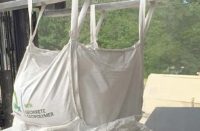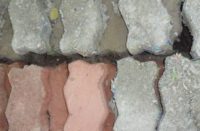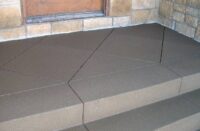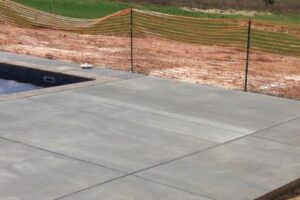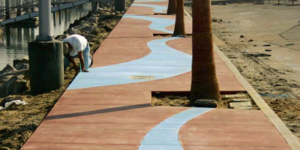
Calculating integral color by loadings is based on total cementitious materials used per yard of concrete. Common loadings for integral color are 1 percent, 2 percent, 3 percent and 4 percent.
1 percent loading produces soft colors
Soft colors perform best when stamping with one or more colored releases that are darker. Accent this loading with dry shake colors or stains to produce natural, multiple colors. This is a great loading for exposed aggregate when a soft background color is needed to complement the color of the sand or stone.
2 percent loading produces warmer colors
These colors work well when stamping with one or more colored releases. Use liquid as an alternative when stains or dry shake colors are used to achieve interesting marbling. Interior troweled surfaces reflect a rich color. Broom finish while keeping consistency in mind and using good concrete practices. If you desire a broom finish, maintain a 4-inch slump and use a damp — but not wet — broom.
3 percent loading produces strong colors
Strong colors can stand on their own when a single color is used for broom finish or other finishes. This works well stamped with your choice of colored release or liquid release. You can do accents with dry shake colors or stains. Interior troweled surfaces have a rich color and make an inviting finish for large projects.
4 percent loading produces bold colors
Bold colors are colors that make a statement. These are highly recommended when broom finishing or with other exterior textures. Stamp concrete with either liquid release or colored release of a darker shade to make the most impact. This is great for power-troweled interior finishes where a single color must stand alone. Burnished power-troweled finish makes for interesting marbling without adding a secondary color.
For an example on how to do the math, we’ll use a six-sack mix loaded with 4 percent color. It breaks down like this:
- A bag of cement weighs 94 pounds, so six bags weigh 564 pounds.
- 564 x .04 percent = 22.56 pounds of color per yard.(94 pounds of cement measure a cubic foot)
